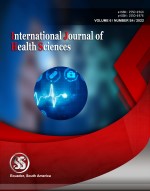A sensitive bioanalytical method development and validation of afatinib in human plasma by LC-ESI-MS/MS
Keywords:
Afatinib, Cabozantinib, Internal standard, Flow rateAbstract
A simple, sensitive and specific liquid chromatography-tandem mass spectrometry (LC-MS/MS) method was developed for the quantification of Afatinib in human plasma using Cabozantinib as an internal standard (IS). Chromatographic separation was performed on Water X Bridge c18 2.1x100 column with an isocratic mobile phase composed of acetonitrile and 0.2% Ammonia in water in the ratio of (70:30 v/v), at a flow rate of 0.250mL/min. Afatinib and Cabozantinib were detected with parent ions at m/z 486.36 to 370.90 and the daughter mass was found to be 381.45 to 304.93 in multiple reaction monitoring (MRM) positive mode respectively. The protein precipitation method was used to extract the drug and IS. The method was validated over a linear concentration range of 2.0-1000.0 ng/mL with a correlation coefficient (r2) ≥ 0. 9994. This method demonstrated Intra and inter-day Precision within 0.3 to 2.5 and 0.4 to 3.9 % and Accuracy from 96.55 to 105.45 and 95.26 to 110.6%. Afatinib was found to be stable throughout Long-term stability studies, benchtop, and postoperative stability studies.
Downloads
References
Kawada I, Soejima K, Watanabe H, Nakachi I, Yasuda H, Naoki K, et al. An alternative method for screening EGFR mutation using RFLP in non-small cell lung cancer patients. Journal of Thoracic Oncology 2008;3:1096-1103.
Schiller JH. Small cell lung cancer: Defining a role for emerging platinum drugs. Oncology 2002;63(2):105-114.
John T, Liu G, Tsao MS. Overview of molecular testing in non-small cell lung cancer: mutational analysis, gene copy number, protein expression and other biomarkers of EGFR for the prediction of response to tyrosine kinase inhibitors. Oncogene 2009;28 Suppl 1:S14-23.
Olivier Bouche, Frederique Maindrault-Goebel, Michel Ducreux, Gerard Lledo, Thierry Andre, Peter Stopfer, et al. Phase II trial of weekly alternating sequential BIBF 1120 and afatinib for advanced colorectal cancer. Anticancer Research2011;31:2271-2282.
Jahnavi Bandla, Ganapaty S. New stability-indicating ultraperformance liquid chromatography method development and validation of lenvatinib mesylate in bulk drug and pharmaceutical dosage forms. Asian Journal of Pharmaceutical and Clinical Research 2018;11(9):140-143.
Madhavi S, Prameela Rani A. Simultaneous reverse phase ultra-performance liquid chromatography method development and validation for estimation of Grazoprevir and Elbasvir. Asian Journal of Pharmaceutical and Clinical Research 2018;11(4):100–104.
Kishor kumar Mule L. Rapid analytical method for assay determination for prochlorperazine edisylate drug substances by Ultra Performance Liquid Chromatography. International Journal of Current Pharmaceutical Research 2017;9(4):118- 122.
Ravikumar Vejendla, Subramanyam CVS, Veerabhadram G. New RP-HPLC method for the determination of Afatinib dimaleate in bulk and pharmaceutical dosage forms. Indo American Journal of Pharmaceutical Research 2015;5(5):2098-2111.
ICH, Q2B. Harmonized Tripartite Guideline, Validation of Analytical Procedure: Methodology, IFPMA, in: Proceedings of the International Conference on Harmonization, Geneva; 1996.
Ngwa, G.. (2010). Forced degradation as an integral part of HPLC stability-indicating method development. Drug Delivery Technology. 10. 56-59.
Published
How to Cite
Issue
Section
Copyright (c) 2022 International journal of health sciences

This work is licensed under a Creative Commons Attribution-NonCommercial-NoDerivatives 4.0 International License.
Articles published in the International Journal of Health Sciences (IJHS) are available under Creative Commons Attribution Non-Commercial No Derivatives Licence (CC BY-NC-ND 4.0). Authors retain copyright in their work and grant IJHS right of first publication under CC BY-NC-ND 4.0. Users have the right to read, download, copy, distribute, print, search, or link to the full texts of articles in this journal, and to use them for any other lawful purpose.
Articles published in IJHS can be copied, communicated and shared in their published form for non-commercial purposes provided full attribution is given to the author and the journal. Authors are able to enter into separate, additional contractual arrangements for the non-exclusive distribution of the journal's published version of the work (e.g., post it to an institutional repository or publish it in a book), with an acknowledgment of its initial publication in this journal.
This copyright notice applies to articles published in IJHS volumes 4 onwards. Please read about the copyright notices for previous volumes under Journal History.
















